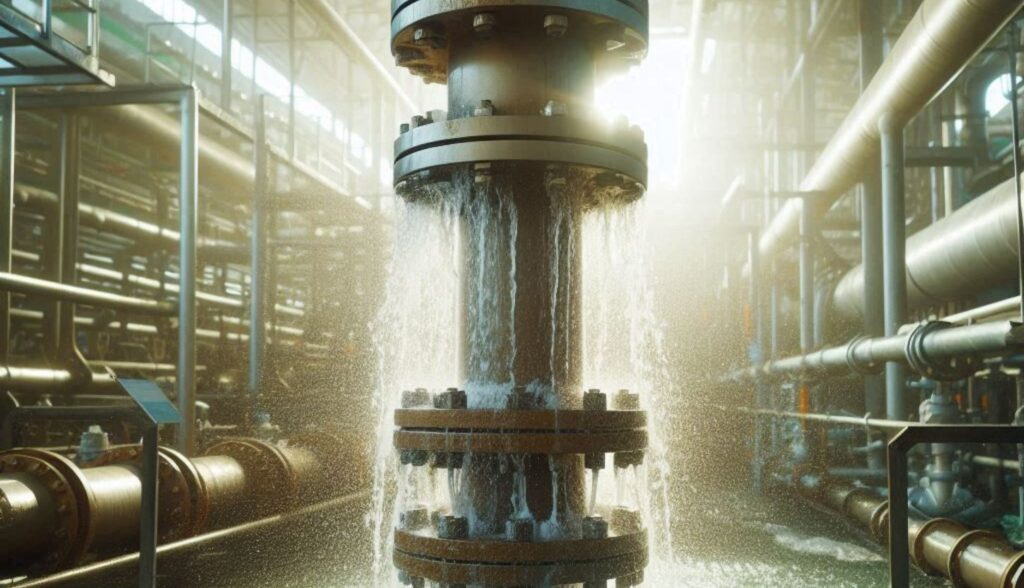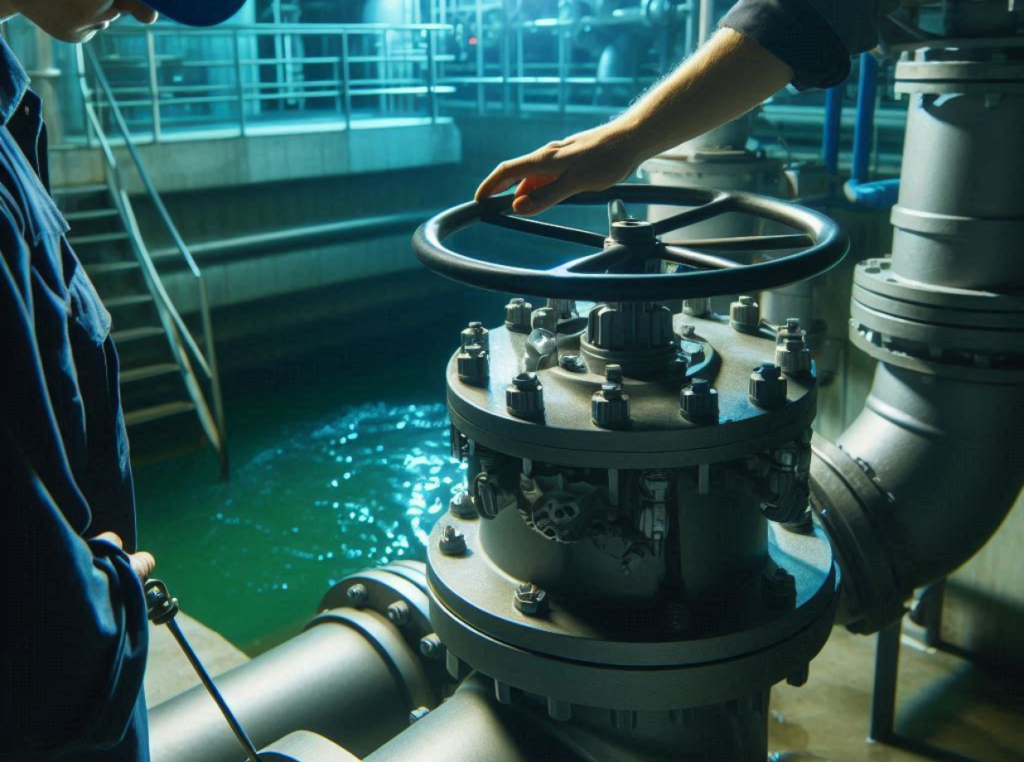Have you ever encountered the term “water hammer” while exploring the fascinating world of wastewater treatment? If not, you’re about to embark on a journey to understand one of the crucial phenomena that can impact the efficiency and longevity of wastewater systems. With a gentle tone, let’s unravel the mystery of water hammers, a term that may sound intriguing, yet it holds significant implications in the operation and maintenance of wastewater treatment infrastructures.

What Is a Water Hammer?
A water hammer, also known as hydraulic shock, is a pressure surge or wave caused when a fluid in motion is forced to stop or change direction suddenly. This is a common occurrence in piping systems when valves close rapidly or pumps start or stop abruptly, causing a momentary pressure spike followed by a series of shockwaves. In the context of wastewater treatment, understanding and managing water hammers is vital, as they can lead to severe damages or even failure of infrastructure.
Understanding the Dynamics of Water Hammers
When a fluid, like wastewater, travels along a pipeline, it carries kinetic energy due to its motion. If there’s a sudden change in flow velocity, the momentum of the moving fluid transforms into a pressure wave, reverberating through the system. This phenomenon creates the characteristic “hammering” or “banging” noise often associated with water hammers.
The Mechanisms Behind Water Hammers
- Valve Closure: When a valve is closed suddenly, the flowing fluid doesn’t have enough time to decelerate, leading to a shockwave.
- Pump Operations: Sudden startup or shutdown of pumps can create pressure surges.
- Flow Reversals: Situations where the flow direction changes abruptly cause significant pressure changes.
These dynamics illustrate how critical it is to manage and mitigate water hammers, especially in complex systems like those found in wastewater treatment facilities.
Impacts of Water Hammers in Wastewater Treatment
The presence of water hammers in wastewater systems can have a range of detrimental effects. Not only do they undermine the integrity of the system, but they can also affect operational efficiency and maintenance costs.
Consequences on Infrastructure
Repeated exposure to the pressure surges characterizing water hammers can lead to:
- Pipe Damage: Pressure surges can lead to pipe bursts or collapse, especially in materials that aren’t made to withstand such forces.
- Joint Leakages: The stress from water hammers can cause leaks at pipe joints and fittings.
- Valve and Pump Damage: Sudden pressure changes damage valves and pumps, leading to increased wear and tear.
Operational Challenges
The challenges posed by water hammers extend beyond physical damage. They can result in:
- Increased Maintenance: Repeated occurrences can lead to frequent repairs and increased maintenance costs.
- System Downtime: Damaged components can lead to significant operational downtime, affecting the overall treatment process.
Understanding these impacts helps underscore the importance of integrating features to counteract water hammers in design and operation stages.
Causes of Water Hammers in Wastewater Systems
To effectively manage water hammers, one must first comprehend the various causes specific to wastewater treatment processes. While the fundamental principles remain consistent across different water systems, wastewater treatment presents unique scenarios.
Rapid Valve Operations
In wastewater systems, valves control the flow of sewage or treated water. Quickly opening or closing these valves is a primary cause of water hammers. Automating valve operations can prevent human error, but it’s critical to ensure that these operations occur gradually.
Pump Startups and Shutdowns
Pumps play a crucial role in moving wastewater through the treatment process. Abrupt starts or stops can create pressure surges. Incorporating variable frequency drives (VFDs) can help mitigate these by allowing smooth acceleration and deceleration of pumps.
Air Entrapment
Air pockets within pipelines can exacerbate water hammers by allowing sudden pressure changes when they collapse. Ensuring proper ventilation and avoiding potential air lock scenarios can alleviate this risk.
Mitigation Strategies for Water Hammers
Mitigating water hammers involves both preventative measures and active control systems. Combining multiple strategies ensures a robust approach to managing this phenomenon in wastewater treatment facilities.
Proper System Design
Effective design can circumvent many potential issues. Strategies like employing pipe material that withstands pressure surges, calculating and accommodating the maximum expected surge pressure, and designing systems that naturally reduce flow velocities can significantly mitigate water hammers.
Utilizing Surge Tanks and Pressure Relief Valves
- Surge Tanks: These tanks absorb the kinetic energy of the moving fluid, reducing pressure spikes.
- Pressure Relief Valves: These valves allow excess pressure to dissipate safely, preventing potential damage.
Implementing Slow-Closing Valves
Valves that open and close gradually help reduce the velocity changes that cause water hammers. This approach minimizes shockwaves and subsequent pressure surges across the system.
Soft Starting and Stopping of Pumps
Employing VFDs to allow a gradual increase or decrease in pump speed minimizes the impact of water hammers. This results in smoother transitions and reduces stress on the system.
Ensuring Adequate Venting
Adequate venting is crucial to prevent air pockets and potential water hammer scenarios. Venting systems enable the release of trapped air, maintaining a stable fluid pressure balance within pipelines.
Monitoring and Maintenance

Regular monitoring and maintenance routines play a pivotal role in preventing and controlling the effects of water hammers in wastewater facilities. By keeping a constant check on system performance, operators can identify potential issues before they escalate into severe problems.
Monitoring Pressure Fluctuations
Utilize pressure sensors and other monitoring tools to keep track of pressure changes within the system. This real-time data can be used to detect early signs of potential water hammer incidents, allowing for timely intervention.
Routine Maintenance Inspections
Regular checks and maintenance of valves, pumps, and other system components ensure that they are functioning correctly and can handle pressure variations effectively. Maintenance routines help manage wear and tear, and thereby, reduce the risks and impacts of water hammers.
Real-World Examples of Water Hammer Incidents
Understanding real-world scenarios where water hammers have affected wastewater treatment systems provides vital insights into their impact and the effectiveness of various mitigation measures.
Case Study: Wastewater Plant in Perfect City, USA
In a wastewater treatment plant situated in a bustling city, a series of water hammer incidents led to frequent pipeline bursts. Upon investigation, it was discovered that rapid valve operations were the primary cause. By integrating automated, slow-closing valves and shock absorbers, the plant significantly reduced the frequency and severity of water hammer events.
Lessons Learned
- Strategic Valve Operations: Implementing slow-operating valves can drastically mitigate water hammer risks.
- Regular Monitoring: Continuous monitoring systems can alert to unusual pressure changes.
The Role of Technology in Addressing Water Hammers
Technological advancements have paved the way for innovative solutions to manage water hammers in modern wastewater systems. These technologies offer real-time data for more efficient and effective system management.
Smart Control Systems
Smart systems make it possible to anticipate and react to pressure changes dynamically. They utilize real-time data to adjust valve operations and pump speeds, preventing abrupt pressure shifts and reducing the likelihood of water hammers.
Predictive Maintenance
Leveraging technology for predictive maintenance enables operators to foresee potential issues based on historical data and trends. This proactive approach ensures timely repairs and adjustments, preventing severe water hammer effects.
Future Trends in Wastewater Treatment
The world of wastewater treatment is continually evolving, and new trends could further revolutionize how water hammers are managed. Innovations in materials, design, and technology are likely to play crucial roles in future-proofing wastewater systems.
Advanced Materials
Exploring materials with enhanced durability and flexibility can offer new ways to withstand the stresses of water hammer impacts. These materials could improve the overall resilience of wastewater infrastructures.
Integrated AI Solutions
The future might see greater integration of artificial intelligence in wastewater management, offering real-time analysis and adjustments in pump operations and valve control, significantly reducing the potential for water hammers.
Conclusion
Water hammers, while often overlooked, play a vital role in the operational efficiency and integrity of wastewater treatment systems. Understanding the causes, impacts, and mitigation strategies is essential for any system’s long-term success and functionality. Through proper design, advanced technology, and regular maintenance, it’s possible to not only manage but also mitigate the effects of water hammers, ensuring the durability and reliability of our wastewater infrastructures. As the industry advances, embracing emerging trends and innovations will continue to fortify systems against the challenges posed by water hammers.